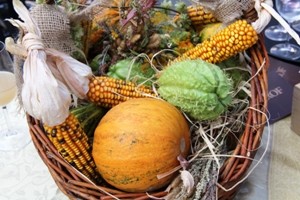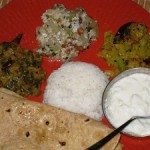Idli
You can’t visit South India without having idli for breakfast. Almost every family in South India makes idlis regularly. Made with urad dal (split black gram) and rice or rice rava (cream of rice), idli has been the staple morning dish from times immemorial. These soft and fluffy steamed rice cakes are filling, nutritious, easy to digest, and make a healthy breakfast.
While the recipe is simple enough, it can be tricky to get the consistency and dal-to-rava proportion just right. For soft idlis, the batter should be of a flowing consistency and fermented to the right degree (for about 24 hours). If you don’t want the idlis to become sticky, make sure the batter is not too smooth. A slightly coarse batter makes for a better texture.
Instead of idli rava, you could add 1 cup of regular rice (long-grained or Thai jasmine rice works fine) and 2 cups parboiled rice, aka, idli rice, (try Udupi brand).
You will need an idli stand to make these (available in Indian grocery stores or online).
Servings: 6-8
Cooking Time: 10 minutes (excluding the time for soaking and grinding)
Ingredients
- 1 cup urad dal (split black gram)
- 2 cups idli rava (cream of rice)
- 1 tsp fenugreek seeds (methi)
- 1 tsp plain yogurt
- 2 tsp salt
Preparation
- Soak the urad dal with fenugreek in a bowl with 2 cups of water for 2-3 hours.
- Soak the idli rava in another bowl with just enough water to form a paste.
- Drain the water from the dal and in a blender, grind along with fenugreek seeds with a little water to a smooth, flowing consistency as for cake batter.
- Add the salt, yogurt and rava and pulse in the blender for a second to mix all the ingredients.
- Remove in a large bowl. The batter rises to double its level in the bowl as it ferments, so be sure the bowl is large enough. Set aside in a warm place for about 24 hours.
- The batter’s ready if it has risen, and has bubbles on top with a fermented aroma.
- Beat the idli batter, and coat the idli plate with a little oil or use a vegetable oil spray, to prevent the idlis from sticking to the plates. Fill the moulds in the idli plates with the batter. Put the plates in a steamer or pressure cooker (without the weight), and steam for 10-12 minutes. If using a pressure cooker, be sure to add 1 cup of water in the cooker, once the steam builds up, reduce the heat to medium-high.
- Let the idlis cool for about 5 minutes. Use a fork or knife to test if the idlis are cooked (the knife should come clean). Use a butter knife to gently go around the edges to loosen the idli from the mould and remove.
- Drizzle with ghee (clarified butter) and serve with coconut chutney and sambar or chutney powder.
Cooking Tip
If you don’t have an idli stand, you can steam it in a round cake pan to make one large idli that you can cut into wedges. Or you can use small metal cups annd steam in a Chinese steamer basket. Be sure to brush the pan with oil before pouring the batter.
After the batter has fermented, you can refrigerate the batter in a covered container and use it for up to a week.
You can also use the idli batter to make dosa (crepes) and uthappam. Just add a little water to make it into a slightly runny consistency.
Category: Vegetarian Breakfast Recipes, Vegetarian Breakfast Recipes - No-Onion No-Garlic









